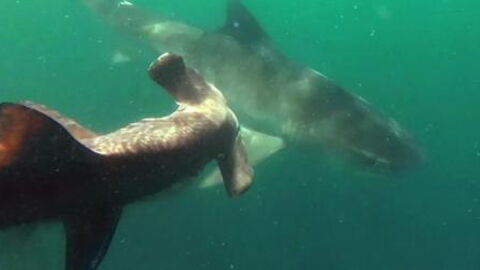The veterinarians of the centre tried everything. On April 25, 2019 the aquarium Nausicaà announced the death of the last hammerhead shark of the centre on their facebook page. A rather controversial bit of news.
Discover our latest podcast
From 2011 to 2018, in collaboration with the Australian authorities, the Nausicaà centre organised the capture and importation of 30 hammerhead sharks with the aim of raising awareness of the fragility of the species, to get to know it better and to learn how to protect it in its natural environment. Several pitfalls disrupted the project until it came to an end following the death of the last hammerhead shark, a 9 year old male who was already in a state of concern.
The strongest fought, the weakest succumbed to disease
A fungal disease called Fusarium Wilt causes over the years a veritable hecatomb of premature death in young sharks. The anxiety continues to grow among employees, especially as the aquarium loses its last shark, a baby of about 8 months.
The director of the centre, Philippe Valette, confirmed the horrible discovery in an interview with the Parisian: "The autopsy revealed that it was caused by a fungal infection, latent in the body of sharks, which develops when they are weakened ". In addition to the disease the behaviour of the animals were affected, which complicated the work of the vets as the director specifies: "They continually attacked each other, and the weak ones stopped feeding, before being done in by the fungal infection".
A strongly criticised project
With a total cost of 3.3 million euros, the project led by the Nausicaà center was severely criticised by the Sea Shepherd association, who criticised it for not having invested such an exorbitant directly in the defence of the species in its natural habitat. Outside of its budget, critics focused on the fierceness of the park, which had first captured 20 sharks in 2011 and 10 more after the premature death of the first 20.
A misunderstanding expressed on the website of the organisation: "Why, after the resounding failure of 2011, the Boulogne-sur-Mer aquarium has persisted in wanting to exhibit these fragile animals, threatened and whose longevity in their natural environment far exceeds that of a captive life?"
Check out the video to find out more!















